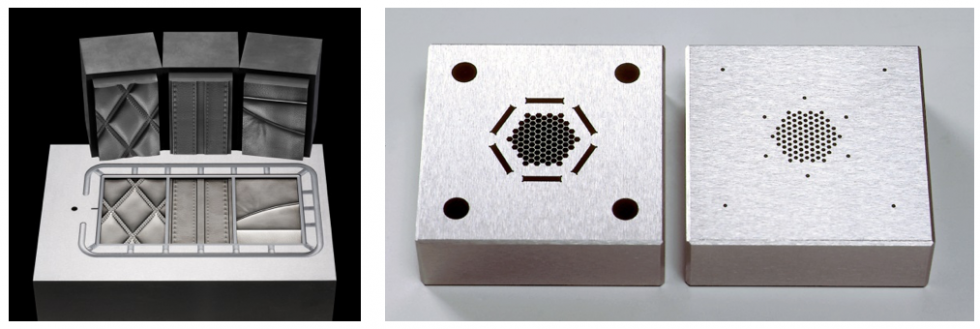The EDM (Electrical Discharge Machining) process utilizes short bursts or pulses of electrical energy to erode and machine conductive materials. The process can be thought of as machining with lightning bolts, called sparks. The number and power of each spark can be precisely controlled through the EDM machine. By modifying the amount and power of the discharge spark energy, the material removal rate, attained surface finish and resulting accuracy can be predictably and repeatedly controlled.
While EDM is commonly thought of as a slower form of metal removal compared to conventional milling and some other processes, recent advancements in EDM technologies have led to significant improvements in processing times and finish quality for even the most complex and involved part geometries. What’s become an essential process for die/mold shops and aerospace, automotive and other manufacturers began in the most-humble of ways—with a failure.
In the early 1940s, two scientists in the former Soviet Union, B.R. Butinzky and N.I. Lazarenko, experimented with methods to prevent erosion of tungsten contacts caused by electrical sparking during welding. They didn’t find a better way to weld, but instead discovered how to control metal erosion by immersing the electrodes in oil or water. From their research, Butinzky and Lazarenko built the first EDM used for processing metals that were difficult to machine with conventional milling, drilling or other mechanical methods such as tool steel and titanium.
Butinzky and Lazarenko drew upon ideas developed by English physicist Joseph Priestley, who wrote in 1770 about the erosive effect of electricity on certain metals. The Russians’ early work became known as “spark machining” because electrical discharges caused sparks that could be controlled in order to manufacture specific shapes.
How Machining with Electricity Works
In conventional machining, material is removed by cutting tools that turn or grind against the workpiece with a mechanical force. In the EDM process, sparks of electricity create short bursts of high energy that instantly melt and vaporize the material—without ever touching the workpiece. Due to the non-mechanical and non-contact machining process, EDM is referred to as a “non-traditional” type of manufacturing.
Key to EDM machining is how electricity passes from a tool (electrode) to the workpiece, which must be a conductive material like steel or aluminum. The tool (electrode), which can be a small diameter wire, a small hollow tube, or an electrode mechanically machined into a negative version of the workpiece’s final shape, is placed and maintained in close proximity to the workpiece during the EDM spark erosion process.
Three EDM Methods
EDM technology has evolved into three distinct machining approaches:
- Wire EDM uses a small diameter copper or brass-alloy wire to cut parts much like a band saw. Traditional uses are to make punches, dies and inserts from hard metals for die/mold tooling applications. But its use has also expanded to include part production over a wide array of industries.
- Sinker EDM uses electrodes machined from a special graphite or copper material into the shape or contour feature needed on the final workpiece. It’s typically used to produce small or complex cavities and forms for die/mold tooling but it has also found use in many production applications.
- EDM Drilling uses a small diameter hollow tube electrode made from copper or brass alloys to erode holes into the workpiece. It’s typically used to prepare start holes for the Wire EDM process, but it’s also progressed to producing small hole features found in dedicated production applications such as turbine engine components and medical devices.
Stay Tuned for More!
If you’ve enjoyed getting back to basics in this first lesson, be sure tune in for the remaining five lessons in this 6-part series as we reflect on our industry and celebrate the building blocks that have led us to the fascinating EDM advancements that we encounter each day.
